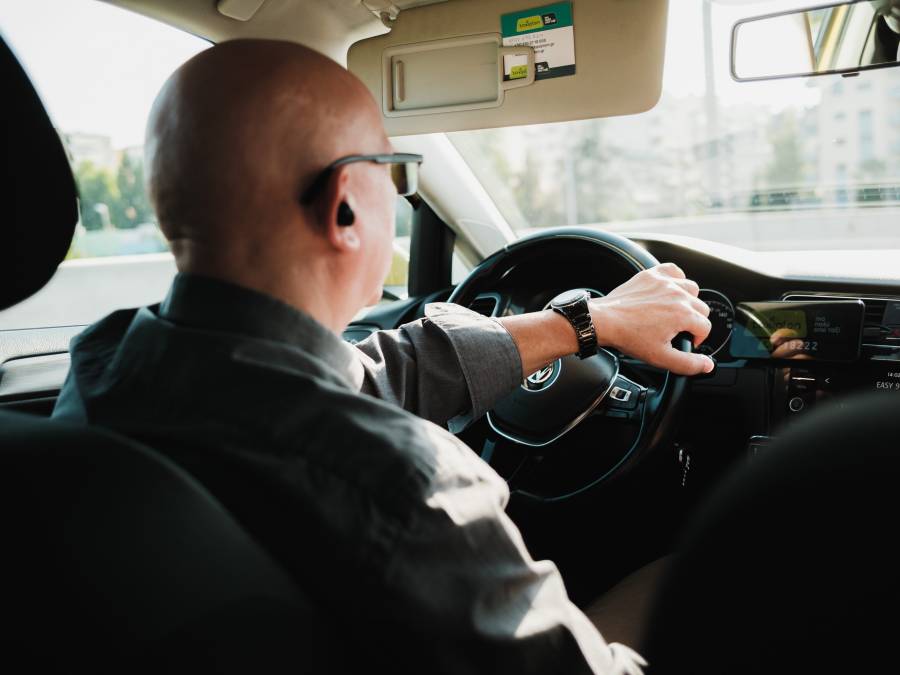When considering driving for Uber, potential drivers often wonder if their vehicle meets the platform’s requirements. One common question is whether driving a coupe is allowed when providing rideshare services.
In this comprehensive guide, we will explore the possibility of driving for Uber in a coupe, examine the factors that may affect this decision, and provide tips for navigating the process.

Contents
- 1 1. Understanding Uber’s vehicle requirements
- 2 2. Examining Uber’s various service tiers
- 3 3. Considering market demand and customer preferences
- 4 4. Evaluating the cost-effectiveness of driving a coupe
- 5 5. Exploring alternative rideshare platforms
- 6 6. Assessing potential vehicle upgrades or modifications
- 7 7. Balancing personal and professional vehicle use
- 8 8. Staying up-to-date on Uber’s vehicle policies
- 9 9. Considering alternative income streams within the gig economy
- 10 10. Weighing the pros and cons of driving a coupe for Uber
- 11 Conclusion
1. Understanding Uber’s vehicle requirements
Uber has specific vehicle requirements that drivers must meet to be eligible for the platform. These requirements vary depending on the type of Uber service being provided and the driver’s location.
In general, Uber requires vehicles to have four doors and seat at least four passengers, excluding the driver.
While coupes typically have only two doors and limited seating capacity, they may not meet Uber’s standard vehicle requirements for most services.
However, it’s essential to review the specific guidelines for your location and the type of Uber service you plan to offer, as there may be exceptions or additional requirements in certain areas.
2. Examining Uber’s various service tiers
Uber offers multiple service tiers, each with different vehicle requirements. While coupes may not be suitable for all types of Uber services, they could potentially qualify for specific categories depending on the make, model, and features of the vehicle.
Here’s an overview of Uber’s main service tiers and their respective vehicle requirements:
- UberX: This is the most common and affordable Uber service, requiring vehicles to have four doors, seat at least four passengers (excluding the driver), and be in good condition. Coupes generally do not meet these requirements.
- UberXL: Designed for larger groups, UberXL vehicles must have four doors and comfortably seat at least six passengers (excluding the driver). Coupes are not eligible for this service tier.
- UberSELECT: This service tier features higher-end vehicles and requires cars to be luxury sedans with four doors, leather or vinyl interiors, and seating for at least four passengers (excluding the driver). Coupes typically do not qualify for UberSELECT.
- UberBLACK and UberSUV: These luxury services have strict vehicle requirements, including a black exterior, black leather interior, and commercial registration. UberBLACK vehicles must be luxury sedans with four doors, while UberSUV vehicles must be luxury SUVs with seating for at least six passengers (excluding the driver). Coupes are not eligible for these service tiers.
Given the vehicle requirements for each Uber service tier, it is unlikely that a coupe would meet the necessary criteria for most offerings.
3. Considering market demand and customer preferences
Even if a coupe were allowed on the Uber platform in specific circumstances, it’s essential to consider market demand and customer preferences when choosing a vehicle for rideshare driving.
Passengers often expect a certain level of comfort and space when using Uber, and coupes may not provide the desired passenger experience due to their limited seating capacity and smaller interiors.
By selecting a vehicle that meets both Uber’s requirements and customer expectations, drivers can increase their chances of receiving favorable ratings and consistent ride requests.
4. Evaluating the cost-effectiveness of driving a coupe
When deciding on a vehicle for Uber driving, it’s crucial to consider the cost-effectiveness of your choice. Factors such as fuel efficiency, maintenance costs, and insurance rates can significantly impact your overall earnings as a rideshare driver.
Coupes, particularly sporty or high-performance models, may have higher fuel consumption, more expensive maintenance, and higher insurance premiums compared to more practical sedans or hatchbacks.

Carefully weigh the potential costs and benefits of driving a coupe for Uber before committing to this option.
If you’re set on driving a coupe for rideshare services, consider exploring alternative platforms that may have more flexible vehicle requirements.
Some smaller or niche rideshare companies may allow coupes or other two-door vehicles on their platforms, depending on local regulations and market demand.
Research rideshare options in your area to determine if any platforms cater to unique vehicle types or offer services tailored to specific customer preferences, such as luxury vehicles, classic cars, or sports cars.
6. Assessing potential vehicle upgrades or modifications
If driving a coupe is your only option for Uber driving, consider whether any vehicle upgrades or modifications could make your car more suitable for rideshare services.
For example, retrofitting your coupe with additional seating or upgrading the interior to meet higher service tier requirements might make it eligible for specific Uber categories.
However, it’s essential to weigh the costs and benefits of these modifications against the potential earnings from Uber driving.
Upgrading or modifying your vehicle can be expensive, and there’s no guarantee that these changes will result in increased ride requests or higher earnings.
7. Balancing personal and professional vehicle use
When choosing a vehicle for Uber driving, it’s essential to strike a balance between personal and professional use.
If you’re passionate about driving a coupe or already own one, you may need to weigh the benefits of using your preferred vehicle against the potential drawbacks of not meeting Uber’s vehicle requirements.
In some cases, it may be more practical to invest in a separate vehicle specifically for rideshare driving, allowing you to enjoy your coupe for personal use while still meeting Uber’s criteria and providing a comfortable passenger experience.
8. Staying up-to-date on Uber’s vehicle policies
Uber’s vehicle requirements and policies are subject to change, so it’s crucial to stay informed about any updates or revisions that may affect your eligibility to drive.
Regularly review Uber’s guidelines and consult local resources, such as Uber Greenlight Hubs or driver support centers, to ensure that you remain in compliance with all relevant regulations.

By staying informed and adapting to changes in Uber’s policies, you can maximize your potential as a rideshare driver and ensure that your vehicle meets the platform’s evolving requirements.
9. Considering alternative income streams within the gig economy
If driving a coupe for Uber is not feasible due to vehicle requirements or other factors, consider exploring alternative income streams within the gig economy.
Many opportunities exist for individuals looking to earn extra income or work flexible hours, such as food delivery services, freelance work, or pet care services.
By diversifying your income sources, you can enjoy the benefits of the gig economy while still driving your preferred vehicle for personal use.
10. Weighing the pros and cons of driving a coupe for Uber
Before committing to driving a coupe for Uber, carefully weigh the potential pros and cons of this decision.
Consider factors such as vehicle eligibility, market demand, customer preferences, cost-effectiveness, and personal preferences when determining if a coupe is a suitable choice for rideshare driving.
By taking the time to thoroughly evaluate your options and make an informed decision, you can optimize your rideshare driving experience and maximize your potential earnings.
Conclusion
Driving for Uber in a coupe may not be feasible in most cases due to the platform’s vehicle requirements and passenger expectations.
However, by understanding the factors that affect this decision and considering alternative options, you can make the best choice for your unique circumstances and goals as a rideshare driver.
Whether you decide to invest in a different vehicle, explore alternative rideshare platforms, or pursue other income streams within the gig economy, careful planning and research will help ensure your success and satisfaction in the world of rideshare driving.

Hey there! I’m Dave, an experienced Uber driver and the driving force behind this blog. Since 2015, I’ve been sharing my wealth of knowledge and practical advice on all things Uber.
From maximizing your earnings to navigating surge pricing and choosing efficient routes, I’ve got you covered. I’m passionate about empowering fellow drivers, creating a sense of community and support.
Join me on this exciting journey as I guide you through the ins and outs of the rideshare world, helping you become an Uber expert. Let’s hit the road together and unlock the secrets to success in the world of Uber.





![Should You Consider a Manual Transmission for Uber? [Pros & Cons] Should You Consider a Manual Transmission for Uber? [Pros & Cons]](https://uberrideguide.com/wp-content/uploads/2023/06/uber-with-manual-transmission-–-is-it-a-good-idea-1-150x150.jpeg)
